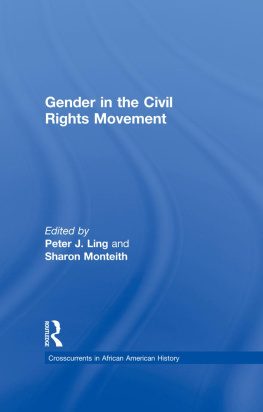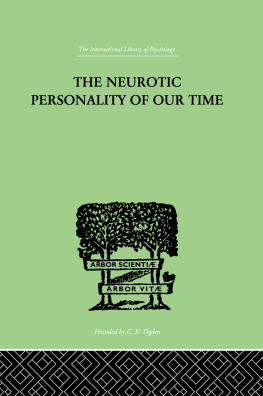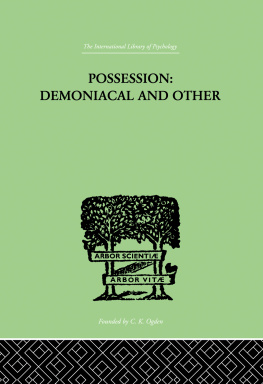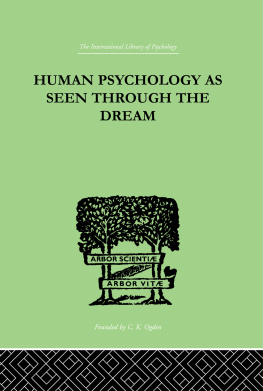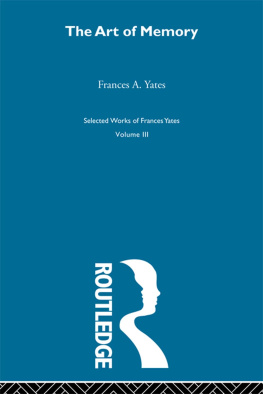GENDER IN THE
CIVIL RIGHTS MOVEMENT
CROSSCURRENTS IN AFRICAN AMERICAN HISTORY
VOLUME 8
GARLAND REFERENCE LIBRARY OF THE HUMANITIES
VOLUME 2080
CROSSCURRENTS IN AFRICAN AMERICAN HISTORY
GRAHAM RUSSELL HODGES AND MARGARET WASHINGTON, Series Editors
WRITINGS ON BLACK WOMEN OF THE DIASPORA
History, Language, and Identity
by Leantin L. Bracks
THE SLAVES OF LIBERTY
Freedom in Amite County, Mississippi, 18201868
by Dale Edwyna Smith
BLACK CONSERVATISM
Essays in Intellectual and Political History
edited by Peter Eisenstadt
MOVING ON
Black Loyalists in the Afro-Atlantic World
edited by John W. Pulis
AFRO-VIRGINIAN HISTORY AND CULTURE
edited by John Saillant
UNYIELDING SPIRITS
Black Women and Slavery in Early Canada and Jamaica
by Maureen G. Elgersman
GENDER IN THE CIVIL RIGHTS MOVEMENT
edited by Peter J. Ling and Sharon Montieth
GENDER IN THE CIVIL RIGHTS MOVEMENT
PETER J. LING
SHARON MONTEITH
First published 1999 by Garland Publishing, Inc.
This edition published 2013 by Routledge
711 Third Avenue, New York, NY 10017, USA
2 Park Square, Milton Park, Abingdon, Oxon OX14 4RN
Routledge is an imprint of the Taylor & Francis Group, an informa business
Copyright 1999 by Peter J. Ling and Sharon Monteith
All rights reserved. No part of this book may be reprinted or reproduced or utilized in any form or by any electronic, mechanical, or other means, now known or hereafter invented, including photocopying and recording, or in any information storage or retrieval system, without permission in writing from the publishers.
Library of Congress Cataloging-in-Publication Data is available from the Library of Congress.
CONTENTS
Peter J. Ling and Sharon Monteith
John A. Kirk
Brian Ward
Marisa Chappell, Jenny Hutchinson and Brian Ward
Peter J. Ling
Belinda Robnett
Jenny Walker
Eithne Quinn
Sharon Monteith
Britta Waldschmidt-Nelson
Series Editors Foreword
In the past thirty years, scholars in the field of African American studies have produced some of the most compelling and original books in American letters. Research on black leadership, labor, community, resistance, and intellectual tradition has blossomed into a field of inquiry of paramount importance. There has been a steady increase in historical scholarship, with younger academics reaching out in new directions and using innovative methodologies such as race and gender analysis. In works on all eras of American history, from each region of the country and even abroad, scholars today carry on the vigorous pursuit of knowledge and analytic interpretation that has always characterized African American studies.
Crosscurrents in African American History is a new series that aspires to publish the best and most recent research in the field. Garland Publishing is proud to present distinguished books that offer contemporary interpretations of the black experience in the United States. The topics in the series have been carefully chosen to fulfill this mission and to advance our knowledge of this critical field. Now and in the future, Garland will publish volumes that create new paradigms in African American historical scholarship, while resting securely on the accomplishments of established work in black studies.
Graham Russell Hodges
Margaret Washington
GENDER IN THE
CIVIL RIGHTS MOVEMENT
INTRODUCTION
Gender and the Civil Rights Movement
Peter J. Ling and Sharon Monteith
The civil rights movement was primarily concerned with race, but it was also about personal identity. For many of its participants, it was clear that the goal of freedom for African Americans would require all Americans to confront the racism within themselves and what it did to both white and black people.1 African Americans lead the movement. They rightly regarded it as their liberation struggle and found a new sense of themselves in the empowerment they experienced.2 Many, though by no means all, African American spokespersons also saw their fight as one over integration. Racial segregation and the systematic discrimination that accompanied it prevented black Americans from enjoying the same life chances as whites. By stigmatizing African Americans, racism attacked their self image so that other key cultural categories of personal identity, such as manhood and womanhood, became problematic.3 Gender and Jim Crow became entangled in deeply pathological ways that were symbolized in the ritual of lynching, as Ralph Ellison has described:
usually enacted in a preselected scene (such as a clearing in the woods or in the courthouse square in an atmosphere of high excitement and led by a masked celebrant dressed in a garish costume who manipulated the numinous objects (lynch ropes, the American flag, shotgun, gasoline, and whiskey jugs) associated with the rite as he inspired and instructed the actors in their gory task.
Lynching affirmed white power and, as Ellison shows, broke down all distinctions between the real and the symbolic, since the victim was forced to undergo death for all his group.4 It also perpetuated the myth of the innocent white woman on her pedestal whose accusation of sexual assault could put black men and boys in peril at the hands of a lynch mob with the power to punish for a hint of disrespect or even on a whim.5 As Evelyn Brooks-Higgenbottom points out, Lynching rationalized by the white South as its defense of [white] womanhood, served to maintain racial etiquette and the socio-economic status quo.6 This situation was unjust and immoral, and by the middle of the twentieth century it was acknowledged that if this were ended, the United States would live more honorably in conformity with its creed.7
Although some African American writers, such as Ralph Ellison and James Baldwin, recognized that racism was very much about the pathology of whiteness, most liberal and radical commentators shared the view that the evil consisted solely of a prejudicial white construction of blackness.8 African American leaders, such as the Reverend Martin Luther King, who strove to appeal to the white majority, argued that their goal of integration would be liberating to white Americans also, as captured in Kings oft-used metaphor of a single garment of destiny: We are caught in an inescapable network of mutuality, tied in a single garment of destiny. Whatever affects one directly, affects all indirectly.9 The small groups of whites who supported the movement actively in the early stage of each phase or local confrontation also commonly felt that racism limited their freedom.10 But usually they conceptualized the problem in terms of racial barriers of prejudice around a world of universal principles that was invisibly coded white. It is only in recent years that the scholarship on racism as a historical phenomenon has looked critically at whiteness.11
Labor historians such as David Roediger have explored with greater precision the socialist view that racism serves to obscure the objective ties of class interest. His nineteenth-century working-class whites use minstrelsy to construct a racial identity that sets them apart from black slaves yet allows them to express their longing for a pre-industrial world symbolized by the African.12 Robin Kelley sees the same process at work in more recent popular culture with Native Americans, Africans and Asians serving as the embodiment of pre-industrial freedom from industrial discipline, hence a model to hate, fear, and emulate simultaneously.13 But whereas previous writers stressed the creation of the black or colored race as a scape-goat and pariah, more recent writers like Phyllis Palmer have underlined how particularized ethnic identities came to be subsumed in the overriding category of whiteness. Palmer cites Gloria Yamatos call to reclaim ethnicity to illustrate the hegemonic power of whiteness and the need to deconstruct the category if we are to understand racism. Palmer and her students at George Washington University were taken aback by the power of whiteness as a cultural-ethnic way of building identities and as a crucial thread in the social, economic and political fabric of the United States.14 In the process of deconstruction, race becomes a dialectical category in which categories of difference need to be seen as continuously contingent upon each other. As a consequence, historical studies of the civil rights movement have now begun to reconstruct a three-dimensional profile of white racists, for example, after decades in which stereotypes have made it easy (and dangerously comforting for white Americans) to regard white southerners of the period as almost cartoon-like exemplars of bigotry and ignorance.15 The challenge to whiteness, and the institutions that have reproduced it throughout history, is gradually overtaking the preoccupation with individual white supremacists. Whiteness, the last bastion of identity politics, has begun to receive the kind of critical examination that rejects its transparency and breaks open the ways in which the very invisibility of whiteness contributes to its power.16


